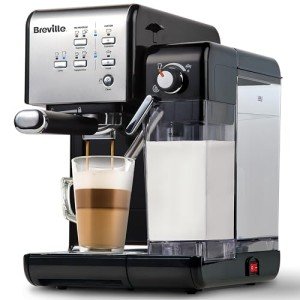The Ultimate Guide to Cappuccino Machines: Brewing the Perfect Cup
Coffees are a cherished coffee beverage that integrates the abundant flavors of espresso with steamed milk and milk foam. For many, absolutely nothing tastes much better than a homemade cappuccino crafted with accuracy. However, replicating the skill of a barista in your home needs the right devices. This is where cappuccino machines come into play. This short article explores the different types of cappuccino machines, how they work, and suggestions for selecting the very best one for your needs.
What is a Cappuccino Machine?
A cappuccino machine is a specialized developing gadget created to make coffees and other espresso-based drinks. These machines normally include an integrated espresso maker, a milk frother, and various controls for adjusting temperature level and pressure. Top Espresso Machines can be manual, semi-automatic, or totally automatic, offering different levels of user control depending upon the complexity of the machine.
Types of Cappuccino Machines
1. Manual Espresso Machines
- Description: These machines require users to run most functions manually, consisting of grinding coffee beans, tamping the grounds, pulling the espresso shot, and frothing the milk.
- Pros:
- Offers complete control over the brewing procedure.
- Can produce high-quality, café-like espresso.
- Cons:
- Steeper learning curve.
- Needs more time and effort.
2. Semi-Automatic Espresso Machines
- Description: Semi-automatic machines automate some procedures, such as water pressure. Espresso Machine Deals require to grind coffee and froth milk by hand.
- Pros:
- Balanced control and benefit.
- Permits room for experimentation.
- Cons:
- Still needs practical skills.
- Can be complicated for novices.
3. Totally Automatic Espresso Machines
- Description: These machines automate the whole developing procedure, from grinding to frothing. Users simply select the preferred drink.
- Pros:
- Extremely practical and easy to use.
- Constant outcomes with little effort.
- Cons:
- More costly.
- Restricted control over the brewing process.
4. Super Automatic Espresso Machines
- Description: Similar to fully automatic machines, but these designs include functions like an integrated milk frother and grinder. They prepare drinks with simply the touch of a button.
- Pros:
- Ultimate benefit; makes numerous drinks quickly.
- Integrated cleansing and upkeep features.
- Cons:
- High initial expense.
- Less hands-on experience with coffee making.
Key Features to Consider
When selecting a cappuccino machine, a number of features can substantially affect efficiency and user experience. Here are some necessary elements to assess:
1. Develop Quality
- Materials used (stainless-steel, plastic)
- Durability and durability
2. Capability
- Water reservoir size
- Bean hopper capability
3. Frothing Capability
- Type of frothing wand (manual, automatic)
- Steam pressure and temperature control
4. Alleviate of Use
- Instinctive controls
- Cleaning up and maintenance requirements
5. Price
- Variety from budget to high-end designs
- Think about guarantees and customer support alternatives
6. Brand name Reputation
- User reviews and professional opinions
- Availability of replacement parts
The Brewing Process
To brew the best cappuccino in your home, follow this process, despite the machine type:
- Prepare the Espresso: Use freshly ground coffee beans and pull a double shot (approximately 2 ounces) of espresso.
- Froth the Milk: Steam fresh milk to a temperature about 150 ° F( 65 ° C)using the steam wand or automatic frother.
- Combine: Pour the steamed milk over the espresso, followed by a layer of milk foam (equivalent parts espresso and steamed milk, with about 1 cm of foam).
For a visual representation, here's a basic table comparing the qualities of the cappuccino machine types:
| Machine Type | Control Level | Ease of Use | Cost Range | Perfect For |
|---|---|---|---|---|
| Manual Espresso Machine | High | Hard | Low to Medium | Coffee lovers, perfectionists |
| Semi-Automatic Machine | Medium | Moderate | Medium | Home baristas, enthusiasts |
| Completely Automatic Machine | Low | Easy | Medium to High | Casual drinkers |
| Super Automatic Machine | Really Low | Really Easy | High | Busy experts |
Frequently Asked Questions (FAQs)
What is the very best milk to use for cappuccinos?
Whole milk is typically chosen for frothing due to its fat content, which produces a creamy texture. Nevertheless, alternatives like almond milk, oat milk, or soy milk can be used, though they might require different frothing strategies.
How do I clean my cappuccino machine?
Many machines feature specific cleaning guidelines. Generally, you ought to routinely clean up the group head, steam wand, and drip tray. For automatic machines, many designs feature self-cleaning cycles.
Can I use pre-ground coffee rather of whole beans?
Yes, you can use pre-ground coffee. However, freshly ground coffee usually produces a more tasty espresso due to the oils in the beans being protected.
Just how much should I spend on a cappuccino machine?
The cost varies considerably based upon functions, brand name, and quality. A fundamental, good quality machine might start around ₤ 200, while high-end very automatic machines can go beyond ₤ 2,000.
How frequently should I replace my cappuccino machine?
With proper maintenance, a high-quality cappuccino machine can last for many years. Nevertheless, you may consider upgrading if you discover your machine no longer fulfills your developing needs or experiences performance issues.
Cappuccino machines are effective allies in delivering the best brew in the house. Whether you favor manual interaction with your coffee or choose the convenience of totally automated machines, understanding the various types and their functions will assist you in making the right choice. By purchasing the perfect machine for your needs and employing the right methods, anybody can delight in a barista-quality cappuccino from the comfort of their own cooking area. With a bit of perseverance and imagination, the art of cappuccino developing can become a wonderful routine, brewing not just coffee but minutes of delight.

